Discover 11 hidden attractions, cool sights, and unusual things to do in Winterset (United States). Don't miss out on these must-see attractions: Clark Tower, Cutler–Donahoe Bridge, and Roseman Covered Bridge. Also, be sure to include Madison County Courthouse in your itinerary.
Below, you can find the list of the most amazing places you should visit in Winterset (Iowa).
Table of Contents
Clark Tower
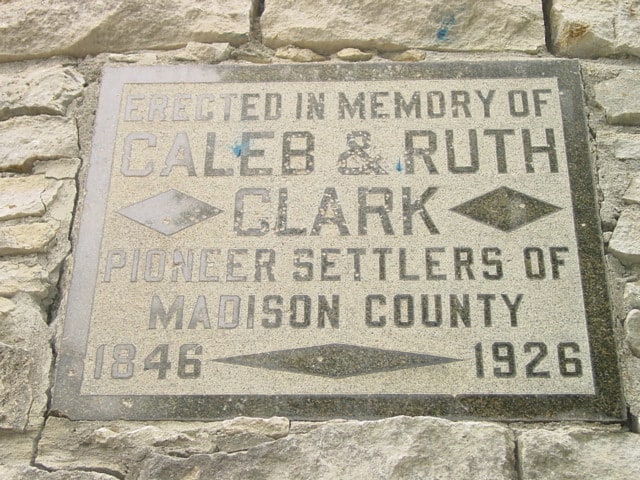
Tower in Winterset, Iowa. Clark Tower is a castle-like limestone tower located in Winterset City Park in Winterset, Iowa, United States. It was erected in 1926, on the eightieth anniversary of the founding of Madison County, in memory of Caleb Clark, a stonemason who was the first white settler of Madison County, and his wife Ruth Clanton Clark. The tower stands at a height of 25 feet.
On March 5th, 2022, Clark Tower was struck by a powerful EF4 Tornado during the Tornado outbreak of March 5–7, 2022, but survived.[1]
Address: Winterset City Park, 50273 Winterset
Cutler–Donahoe Bridge
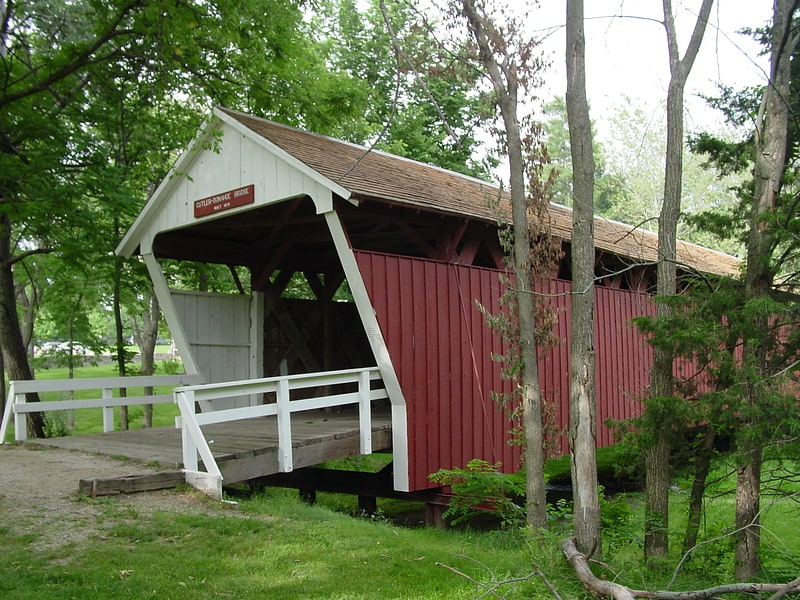
Bridge in Winterset, Iowa. Cutler–Donahoe Bridge is a 79-foot-long covered bridge in Madison County, Iowa. It was built in 1870 by Eli Cox. It originally crossed the North River near Bevington, Iowa. In 1979, the bridge was moved to its current location at the entrance to the Winterset City Park.[2]
Address: S 9th St, 50273 Winterset
Roseman Covered Bridge
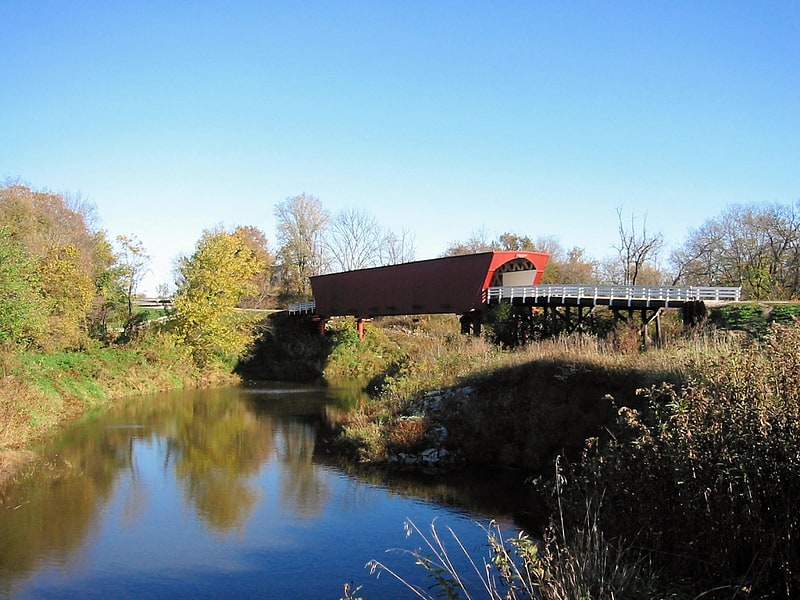
Covered bridge in Madison County, Iowa. The Roseman Covered Bridge is a historic covered bridge in Winterset, Iowa. It is prominently featured in the novel The Bridges of Madison County, as well as its film adaptation. It was built in 1883 over the Middle River, and renovated in 1992. The Roseman Covered Bridge was added to the National Register of Historic Places in 1976.[3]
Address: Elderberry Ave, 50273 Winterset
Madison County Courthouse

Courthouse. The Madison County Courthouse is located in Winterset, Iowa, United States. It was listed on the National Register of Historic Places in 1981 as a part of the County Courthouses in Iowa Thematic Resource. It was included as a contributing property in the Winterset Courthouse Square Commercial Historic District in 2015. The courthouse is the third building the county has used for court functions and county administration.[4]
Holliwell Covered Bridge
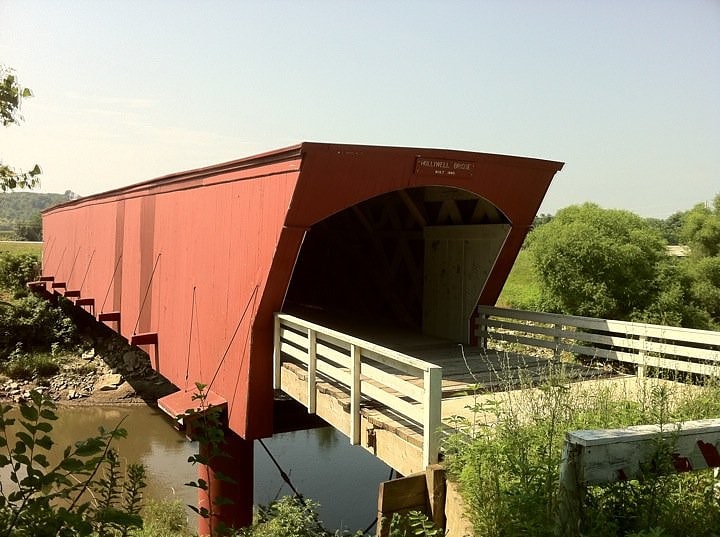
Covered bridge in Madison County, Iowa. Holliwell Bridge is a wooden covered bridge in Madison County, Iowa. It was built over the Middle River in 1880 by Benton Jones.
The bridge is no longer in use, but was renovated and restored in 1995 at a cost of $225,000 ($382,000 today). It is featured in the film The Bridges of Madison County. The Holliwell Bridge was added to the National Register of Historic Places in 1976.[5]
Address: Holliwell Bridge Road, 50273 Winterset
Cedar Covered Bridge
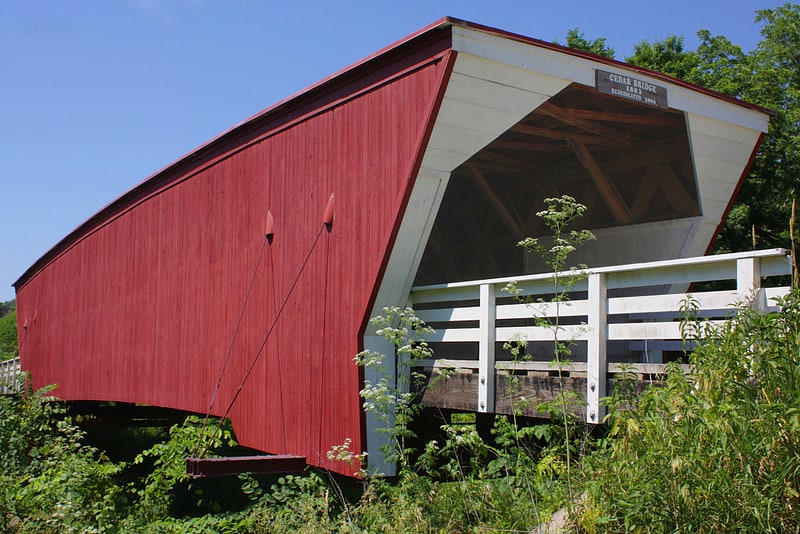
Bridge in Madison County, Iowa. Cedar Bridge refers to three different bridges in Madison County, in the U.S. state of Iowa. The original Cedar Covered Bridge was built in 1883, moved in 1921, and was named to the National Register of Historic Places in 1976. The bridge was filmed in the 1995 movie The Bridges of Madison County, and destroyed by arson in 2002. The second covered Cedar Bridge was built in 2004. This second bridge was destroyed by arsonists in 2017. The bridge was again rebuilt in 2019.[6]
Address: Cedar Bridge Rd, 50273 Winterset
John Wayne Birthplace
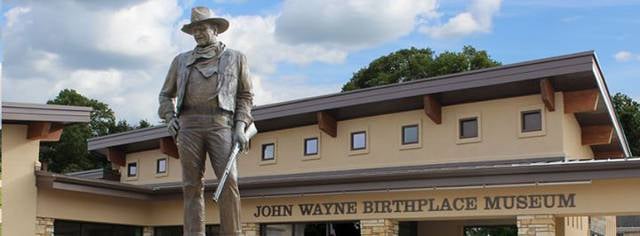
Historical place, Specialty museum, Museum
Address: 205 S. John Wayne Drive, 50273-1904 Winterset
Hogback Covered Bridge
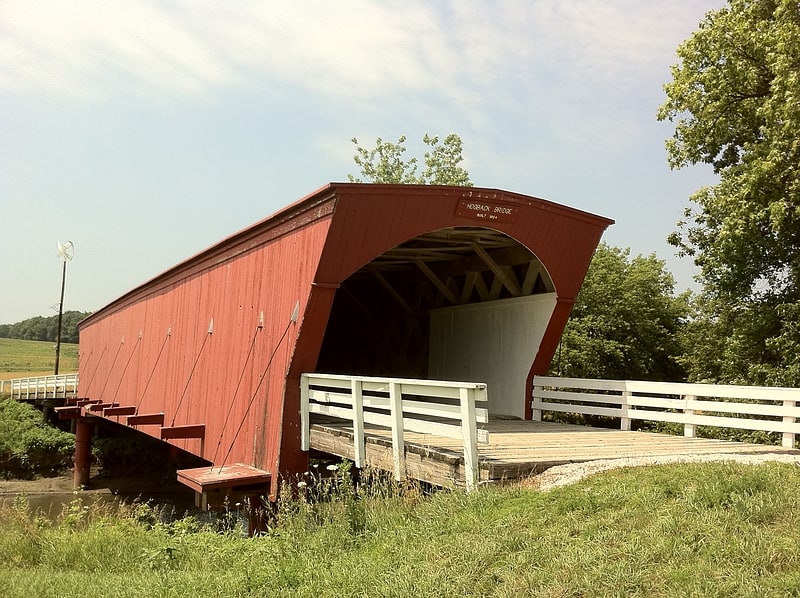
Bridge in Madison County, Iowa. The Hogback Covered Bridge is a historic covered bridge near Winterset, Iowa. Named after a nearby limestone ridge, it was built in 1884 by Harvey P. Jones and George K. Foster over the North River on Douglas Township Road. The 106-foot-long bridge was designed with a Town lattice truss system. It was built with steel pylons to support the main span.
The Hogback Bridge was originally one of 19 covered bridges in Madison County; there are only six remaining covered bridges in the county. In 1992, the bridge was rehabilitated for the cost of $118,810 ($229,000 today). The Hogback Covered Bridge was added to the National Register of Historic Places in 1976.[7]
Address: Hogback Bridge Rd, 50273 Winterset
Iowa Quilt Museum
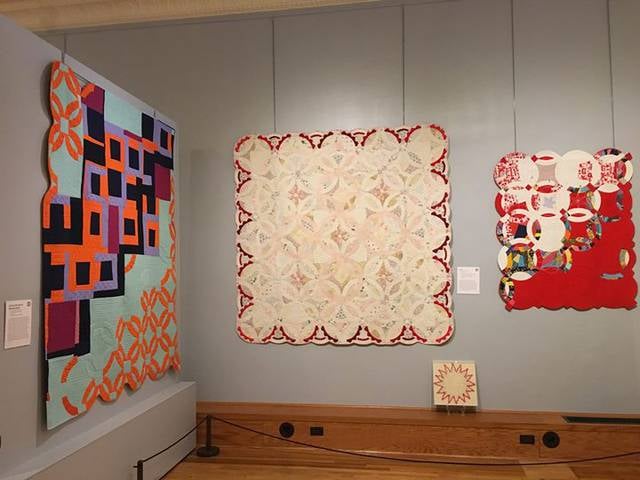
Specialty museum, Museum
Address: 68 E Court Ave, 50273-1517 Winterset
Winterset Courthouse Square Commercial Historic District
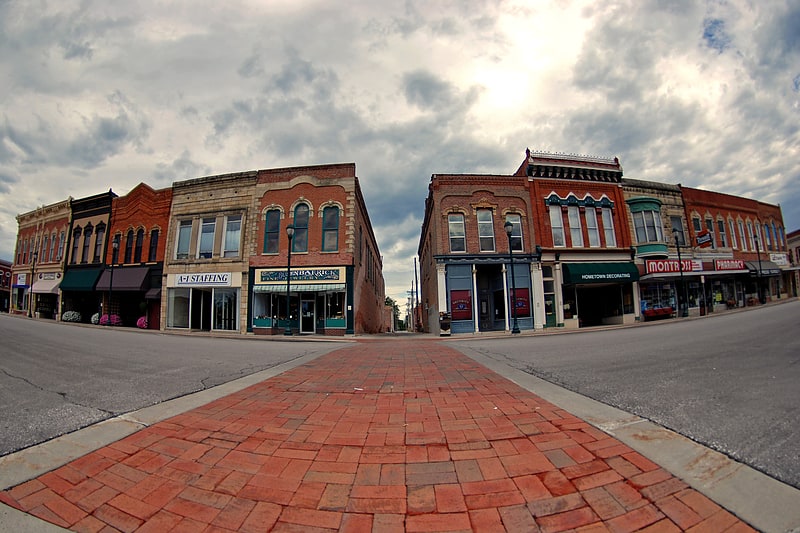
Winterset Courthouse Square Commercial Historic District is a nationally recognized historic district located in Winterset, Iowa, United States. It was listed on the National Register of Historic Places in 2015. At the time of its nomination the district consisted of 82 resources, including 74 contributing buildings, seven noncontributing buildings, and one noncontributing object. The historic district covers most of the city's central business district in the original town plat. Most of the buildings are two-story, brick, commercial buildings. The commercial Italianate style is dominant, with Queen Anne, Romanesque Revival, and Neoclassical styles included. The Madison County Courthouse is a Renaissance Revival structure designed by Alfred H. Piquenard. Most of the buildings are brick construction, but four were constructed using locally quarried limestone. The stone buildings include the courthouse, the White, Munger and Company Store, and the Sprague, Brown, and Knowlton Store, all of which are individually listed on the National Register.
The period of significance for the district is 1861 to 1965 when most of the buildings were constructed. Unlike many historic downtowns in Iowa, Winterset replaced its initial frame buildings with masonry buildings because of economic prosperity, and not because of fires. In addition to Piquenard, other architects of note who contributed buildings in the district include William Foster (Crawford/Jefferson Block, 1873; Schwaner/Centennial Block, 1876), L.W. Foster (Madisonian Building, 1872; City Hall Block/Jones & Tidrick, 1875), Joseph S. Blake (Firemen's Hall/City Hall/Light Plant, 1888, 1889, 1923), Frank E. Wetherell (Bevington Building/Masonic Temple, 1914 remodel), and Louis A. Simon (U.S. Post Office, 1935).[8]
C.D. Bevington House and Stone Barn
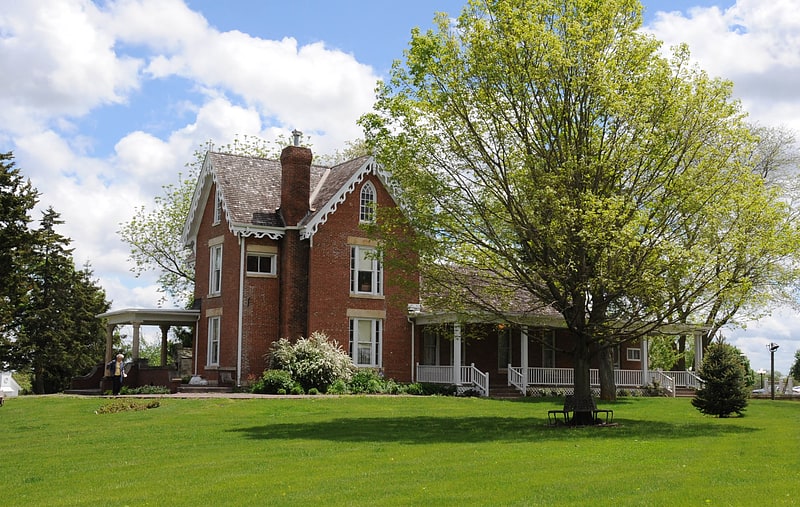
Building. The C.D. Bevington House and Stone Barn are historic buildings located in Winterset, Iowa, United States. Bevington was a pharmacist who passed through the area in 1849 on his way to the California Gold Rush. He settled in Winterset in 1853 after he made his fortune, and worked as a real estate agent and farmer. The house was built in the vernacular Gothic in 1856. The 2½-story brick structure features Gothic windows in the gable ends and carved bargeboards. The two porches were added around the turn of the 20th century. The two-story barn is composed of coursed rubble limestone. The lower level housed two horse stalls and stanchions for other livestock. A hay loft was on the upper level. The house and barn were listed on the National Register of Historic Places in 1976. Both buildings were donated to the Madison County Historical Society and are part of their museum complex.[9]